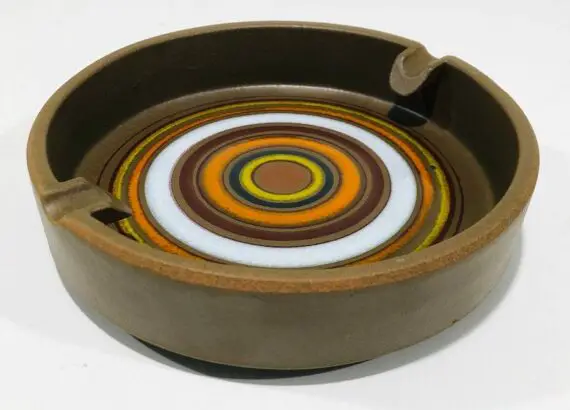Amphora Pottery | Brief Introduction & History
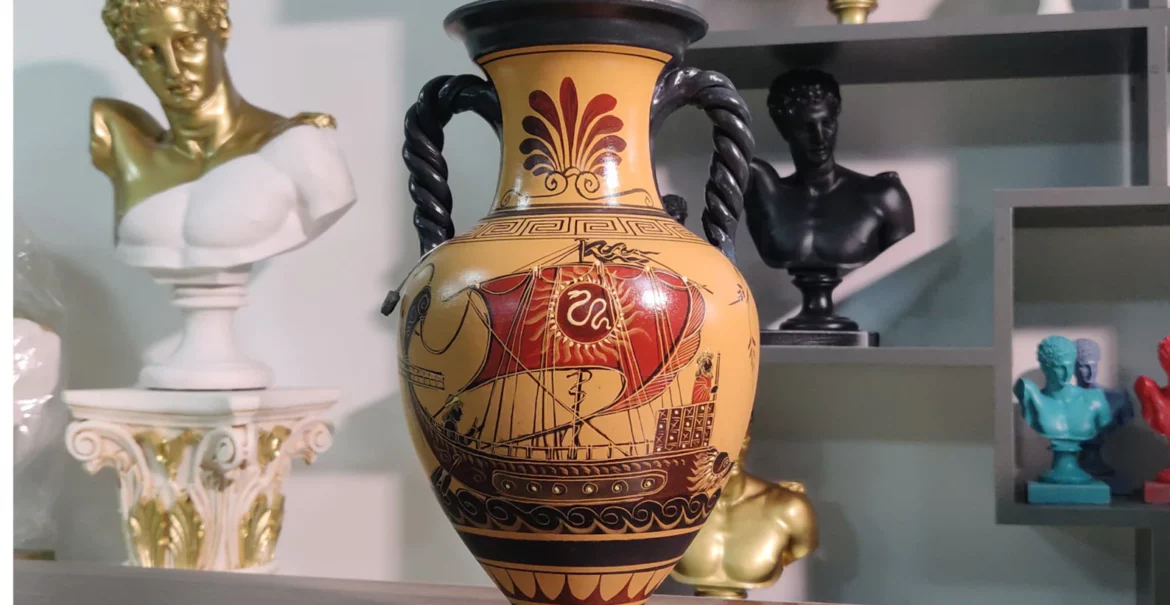
Amphora is a two-handled, narrow-necked ancient Greek or Roman jug. This term refers to a popular and very useful ancient clay masterpiece that was given life by pottery and was used to contain and store wine, oil, grain, or milk.
These Greek Vases offer a unique glimpse into Ancient Greek life. They reflect ancient Greek civilization’s artistic advancements, religion, trade, and political views.
Table of Contents
Amphora definition in Pottery
An amphora is a container with two vertical handles used to store and carry goods such as wine and olive oil in antiquity. Although the Greeks had acquired the pattern from the eastern Mediterranean, the word originates from the Greek amphi-phoreus, which means ‘carried on both sides.’
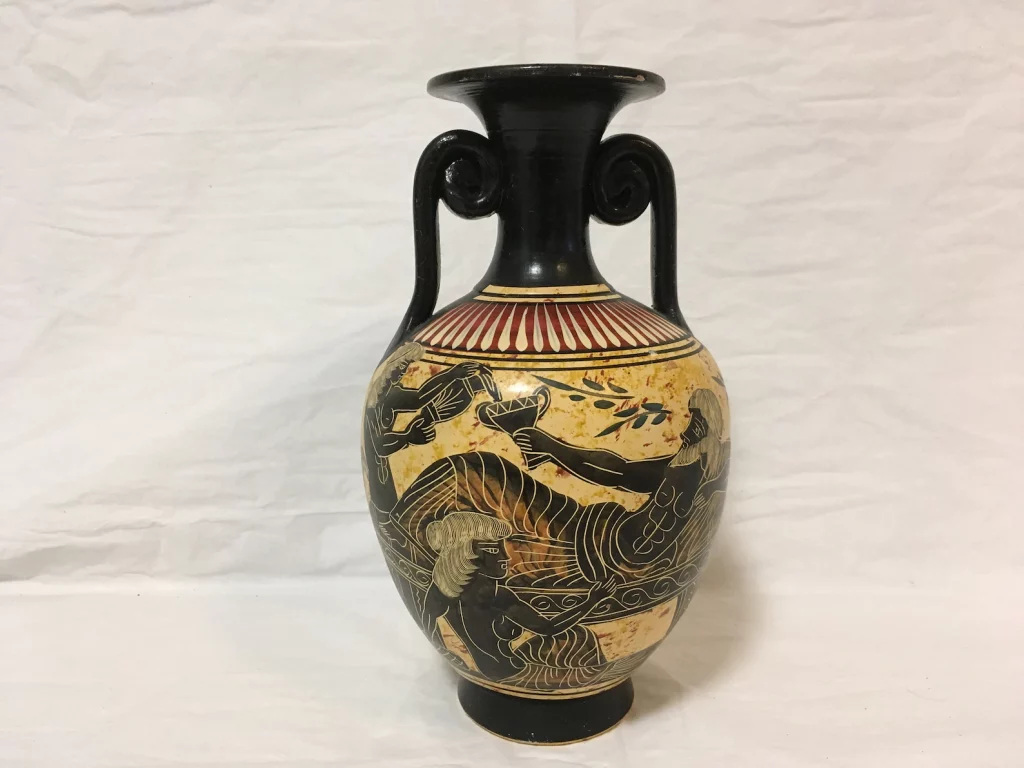
What is Amphora Pottery
These were vessels used to store and carry goods like wine and olive oil in ancient times. Every culture, from the Phoenicians to the Romans, had its own type of pottery, which became a significant survival in archaeological records.
The volume of amphorae was around 20 to 25 liters in older forms, which were bigger. The size of the vases and containers was not standardized until the Byzantine period, and the regular size was decided by the capacity of one or two persons to carry them comfortably.
Wine, olive oil, honey, milk, olives, dried fish, dry food like cereals, and even plain water were among the foods conveyed in them. Pitch was one of the non-food ingredients, and part of it was utilized in tombs as a storage for the deceased’s ashes.
Amphora Pottery History
Around 3500 BC, amphorae first emerged on the Phoenician shore. The ancient Greeks and Romans used amphorae to transport and store grapes, olive oil, wine, oil, olives, grain, fish, and other goods across the ancient Mediterranean continent during the Bronze and Iron Ages. They weren’t mass-produced on a large scale until the 7th century AD.
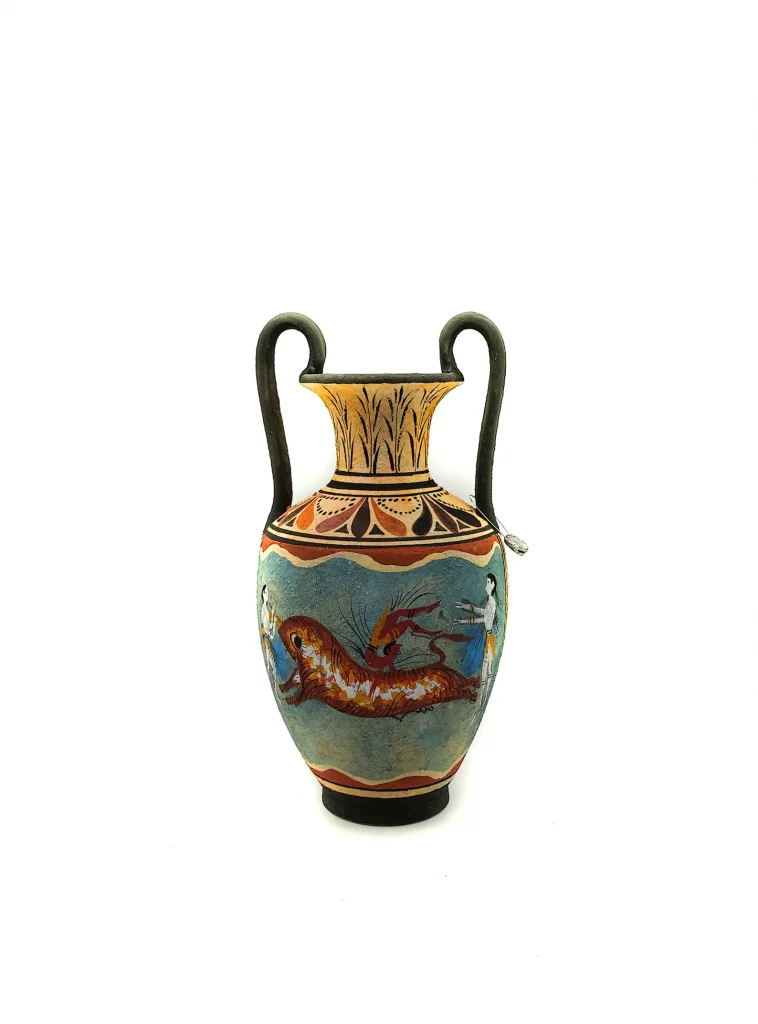
Their continued manufacture in these locations demonstrates their influence on Chinese and other East Asian ceramics. By the time of the Romans, utilitarian amphorae were usually the only ones made.
Off the shore of Kefalonia, an Ionian island off the coast of Greece, the biggest known wreck of an amphorae cargo ship, carrying 6,000 pots, was discovered.
Amphora Pottery Design
Pottery was made in a variety of forms and sizes beginning in the Bronze Age, but the Amphora was the most popular ancient pottery shape throughout the ages. The design and pattern of the ceramics were influenced by each time. These exterior painting compositions represented a certain period’s style.

Geometric designs were engraved on the surface of vases made during the Geometric Period (900-700 B.C.). Dipylon Amphora, created in 750 B.C., was one of the most famous containers of the time. The presentation of animal processions became popular during the Orientalizing Period (700-600 B.C.). Vases largely depicted human and mythical activity throughout the Classical Periods (600-323 B.C.)
These paintings serve as a window into the past, allowing us to gain a better understanding of ancient Greek life and beliefs across time.
Painted amphorae were also employed for funeral purposes, and they came in a variety of shapes and sizes, including the loutrophoros. Outsized vases were employed as burial markers, especially in early eras, and certain amphorae were utilized as containers for the dead’s ashes. Vase painting had virtually gone out by the time of the Romans, and utilitarian amphorae were usually the main type made.
Amphora Pottery Marks
According to World History Encyclopedia, Before firing, several of the vessels had a stamp etched on them, generally around the neck, handles, or rim.
These stamps specified the vessel’s origin, batch number, volume, and capacity, as well as naming a controlling officer. The stamps, particularly those of the Romans, might reveal information about the vessel’s content or purpose.
Czech Amphora Pottery and Marks
With their outstanding and often highly detailed Art Nouveau style, the pieces from this pottery demonstrate extraordinarily high standards of craftsmanship. As shown in the images above, works frequently include “tube-lining” and a matt glaze area with a sandy texture, although there is a wide range of styles and finishes.
Amphora Porcelain Works was located in the Tepliz-Turn region of Bohenmia, which is now Trnovany in the Czech Republic, from 1892 to 1945. Bohemia was a component of the Austro-Hungarian empire prior to WW1.
Not every Amphora pottery is back-stamped, and there are a variety of back stamps to choose from. Pre-WWII pieces will be labeled ‘Austria,’ while post-WWII pieces will be stamped “Czechoslovakia,” if they have a back stamp.
Austrian Amphora Pottery and Marks
Alfred Stellmacher pushed his son and sons-in-law to start a porcelain business in 1892, following 17 years as a pioneer in ceramics manufacture.
By the late 1890s, the business, named after its proprietors Riessner, Stellmacher, and Kessel (RSt&K) and employing son-in-law Paul Dachsel, was routinely marking items with the term Amphora and became renowned by that name.
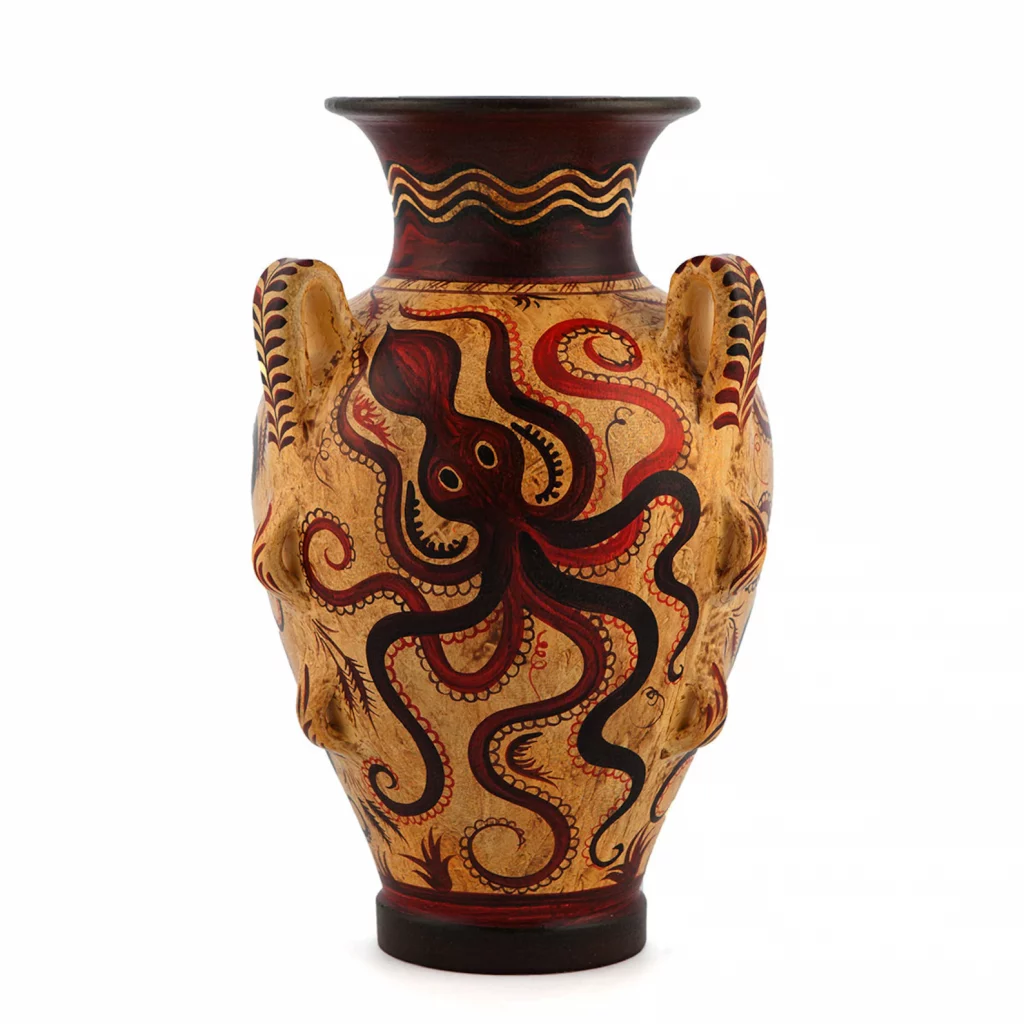
When it was first established, Amphora modeled itself after Alfred Stellmacher’s Orientalist and Neo-Baroque designs. The combined abilities of experienced designers such as Eduard Stellmacher, Paul Dachsel, and a slew of decorators from Teplitz’s Special Ceramics School allowed the Amphora company to swiftly establish a distinct Art Nouveau ceramics genre.
Greek Amphora Pottery
Vases were mainly utilitarian pieces meant to be utilized, not merely admired, by the ancient Greeks. Ceramic vessels were utilized in every aspect of their life, including storage, transportation, mixing, serving, and drinking, as well as cosmetic and perfume containers. Vases were regarded suitable presents for devotion to the gods since they were intricately crafted and adorned.
Every village made practical pottery, but only a few major hubs produced finely designed pieces. During the Archaic (700–480 B.C.) and Classical (480–323 B.C.) eras, distinct regional pottery styles evolved from Corinth, Lakonia, Ionia, South Italy, and notably Athens.
Potting and painting talents were commonly passed down from father to son. Many potters and artists did not have great rank, and some may even have been slaves, according to signatures on vases. Because of the area required to create the vases and the dense smoke produced by the kilns, pottery making was usually done outside the city boundaries.
Roman Amphora Pottery
Amphorae, which are ceramic coarse ware jars used for transporting a variety of goods, provide the most abundant and useful archaeological data on the nature, scope, and scale of Roman inter-regional trade in commodities like olive oil, wine, marine products, and fish pickle (see fishing), preserved fruits, and so on.
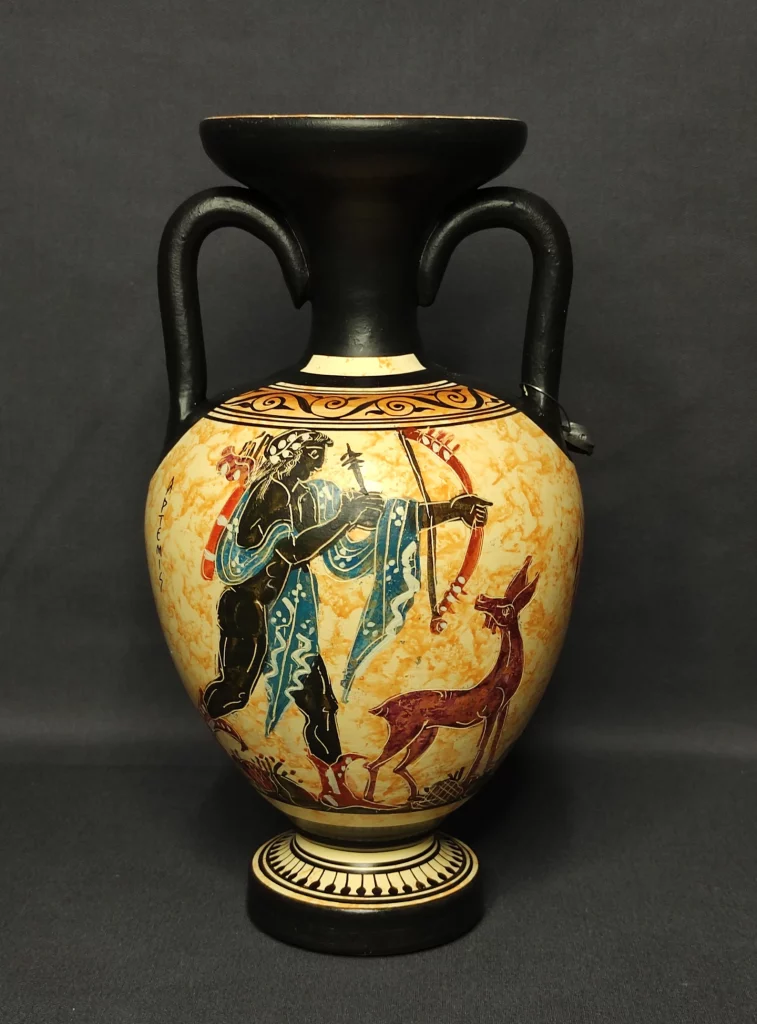
Though painted inscriptions were occasionally added to the jar, the contents were obviously meant to be recognized from the unique external look of the most popular amphora forms. The epigraphic evidence connected with amphorae adds to their importance in economic studies.
Amphorae were clay vessels made by wheel throwing. The body was created initially and then partially dried throughout the fabrication process. After that, clay coils were added to make the neck, rim, and handles.
Imperial Amphora Pottery and Marks
During the Art Nouveau period in Bohemia, amphora refers to exquisite pottery created between 1894 and 1904 in the Turn-Teplitz area. Dealers and collectors refer to these ceramic ceramics as “Teplitz” since they were made between the late nineteenth and early twentieth century.
Amphora was appointed as a court supplier to the Imperial court in Vienna in 1896, and these pieces were given the moniker “Imperial Amphora” and the Austro-Hungarian eagle trademark.
Conclusion
Amphoras are being used by certain modern winemakers and brewers to give their goods a different palate and taste than conventional maturing processes. Classical amphora pottery is now worth a lot, as it contains history and culture that has been passed down through generations and millennia.



